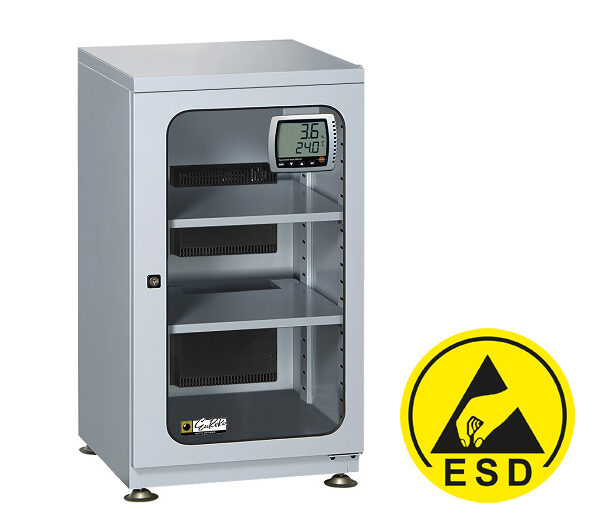
Moisture creeps into the tiniest gaps and quietly causes damage. In the world of precision manufacturing, electronics, and cleanroom environments, even a trace of water can ruin entire batches. That’s where industrial drying solutions step in. These systems create dry, stable environments that help protect parts, tools, and materials during every phase of production.
Among these tools, one type stands out for delicate electronics—the ESD Dry Cabinet. It shields components from static discharge while removing moisture. Together, these drying methods support industries that demand control and consistency.
Why Moisture Control Matters in Industry
Water changes materials. It makes metals corrode, breaks down adhesives, and warps plastics. Factories use materials that must stay dry from start to finish. Moisture doesn’t just reduce quality—it halts production.
When stored improperly, sensitive items absorb humidity. This changes their weight, function, and shelf life. With strict industry standards, even small flaws can lead to rejected goods or failed equipment.
The Core of Industrial Drying Solutions
Industrial drying solutions include tools and systems that remove water from air or objects. Some focus on storage, while others dry parts between steps. These systems keep humidity low through constant airflow or sealed environments.
These solutions come in many shapes:
- Heated air chambers
- Vacuum drying systems
- Desiccant-based dry storage
- Controlled-humidity cabinets
Each method suits a different purpose. Some dry freshly cleaned parts, others store semiconductors.
Understanding ESD Dry Cabinets
The ESD Dry Cabinet adds an extra layer of protection. It keeps humidity low and blocks static electricity. This helps shield electronics from short circuits during storage.
Electrostatic discharge (ESD) happens when two surfaces rub or separate. The resulting spark can destroy microchips or leave hidden damage. ESD cabinets use conductive materials and special linings to redirect electric charges safely.
Key Features of ESD Cabinets:
- Grounded metal frames
- Anti-static inner coating
- Constant humidity control
- Adjustable shelving
With these features, ESD cabinets hold circuit boards, sensors, and precision chips in safe, dry conditions.
How ESD Dry Cabinets Fit Into Industrial Drying
Dry cabinets handle storage. They protect items before use and after inspection. Unlike open shelves or plastic bins, these cabinets don’t let moisture sneak in. They hold a steady humidity level—often below 10%—no matter the weather.
What sets ESD cabinets apart is their double role. They dry and defend. Factories often store microcontrollers, sensors, or memory chips in them. Without this protection, the chips may fail during soldering or testing.
Benefits of Strong Drying Systems
Factories see more than clean parts. They get fewer errors and more efficient runs. Here are a few lasting benefits:
1. Better Product Quality
Dry materials behave predictably. Coatings stick. Joints stay tight. Electronics work longer.
2. Reduced Waste
Dry parts don’t spoil. That means fewer defective batches and less need for rework.
3. Greater Energy Efficiency
Some drying systems use less power by controlling humidity passively or cycling as needed.
4. Improved Safety
Dry tools and materials reduce workplace accidents from slips, sparks, or unexpected reactions.
Factors to Consider When Choosing a Drying System
Every factory runs differently. Picking the right solution depends on what needs drying and when. Consider the following:
- Material Sensitivity: Some parts can’t handle heat or static.
- Size of Inventory: Larger batches may need whole-room drying.
- Storage Time: Longer storage needs stable systems like dry cabinets.
- Humidity Range Required: High-precision parts need lower humidity levels.
Choosing the right tool ensures protection and performance.
Maintenance and Long-Term Use
Drying systems last when workers use them correctly. Clean vents and seals. Replace filters. Keep the cabinet doors shut when not in use. These small steps make a big difference.
Check humidity levels daily. If they rise too much, inspect the system. A well-maintained ESD Dry Cabinet works for years and keeps items in perfect shape.
Future of Industrial Drying
Drying technology evolves quickly. Newer models offer sensor tracking, data logging, and real-time alerts. Some units connect to factory systems for full automation.
The goal stays the same—keep water out. As components shrink and production speeds up, drying becomes even more critical.
Conclusion
Moisture ruins progress. Whether in small chips or large machines, water leads to wear, error, and failure. Industrial drying solutions make sure products work as expected from start to finish.
Among the many tools used today, the ESD Dry Cabinet plays a vital role. It guards fragile parts from both water and electric discharge. These cabinets prove their worth in every factory that handles precision electronics.
In the battle against humidity, drying stands firm. It’s not just about removing water—it’s about preserving performance. As industries grow smarter, drying solutions keep pace. They ensure quality doesn’t slip through the cracks—literally or figuratively.




